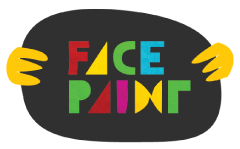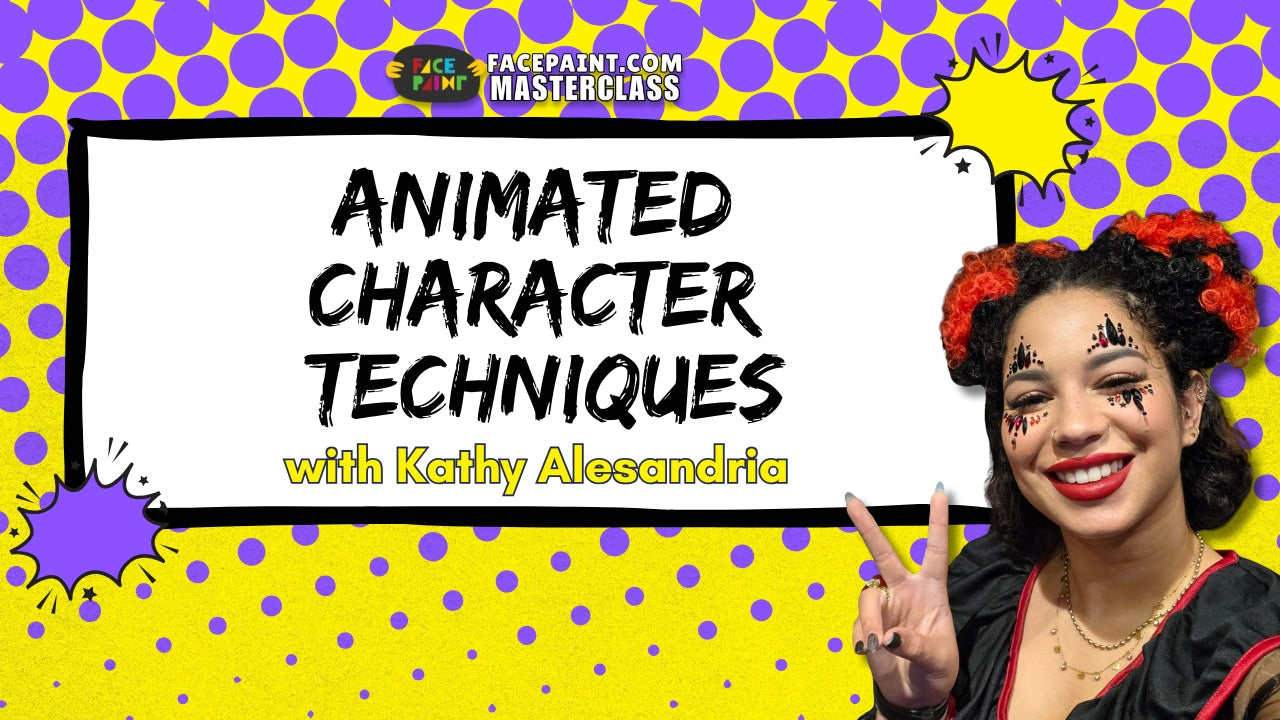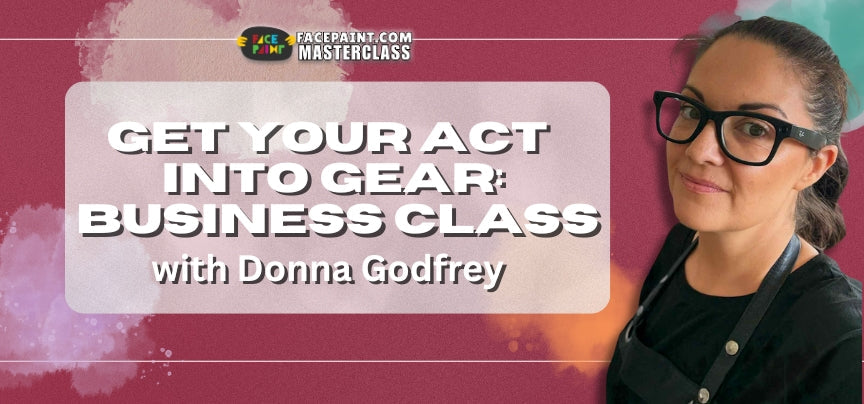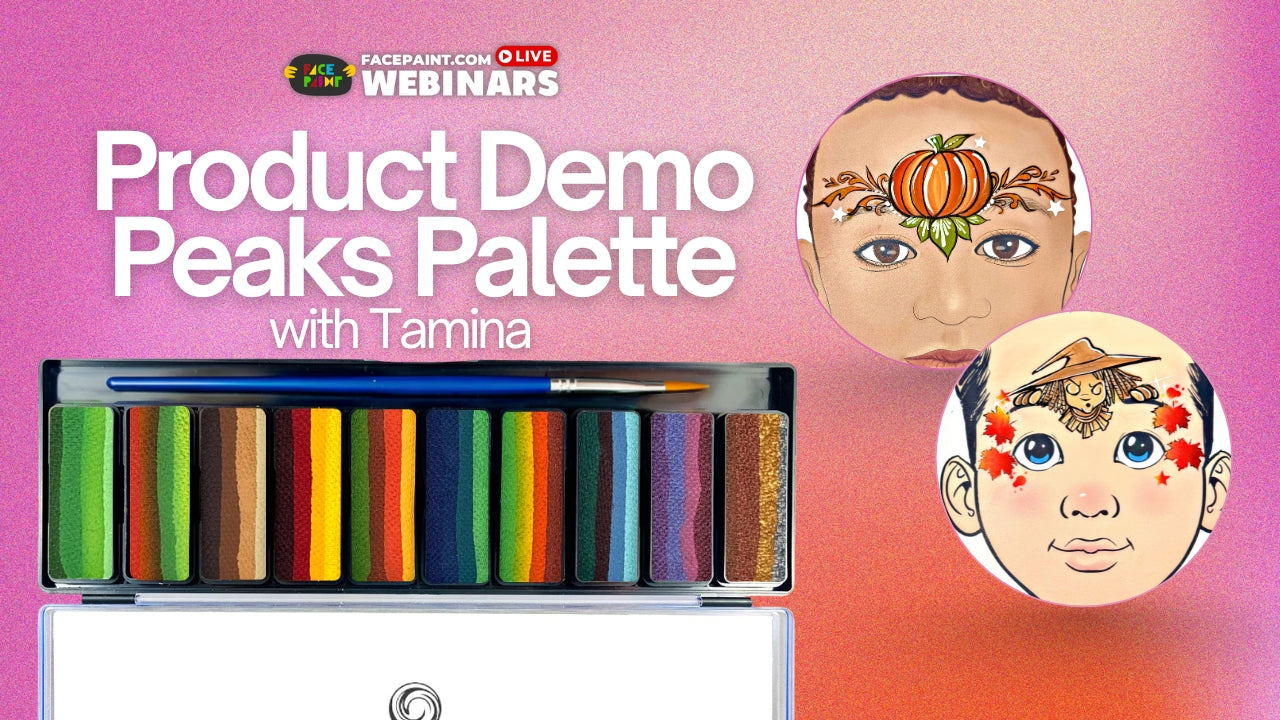Ever wonder how to take your face painting from "that's nice" to "that's AMAZING"? Laura Pennock showed us exactly how in our latest webinar on corresponding hand designs. The secret? It's all about creating an experience that extends beyond the chair.
Here's something Laura pointed out that totally makes sense: every kid comes with one face and TWO hands. What does that tell you? The hands are just as important as the face! By adding quick corresponding hand designs to your face paintings, you're creating interactive art that kids can actually play with.
The Magic of Storytelling Through Paint
Laura emphasized that face painting isn't just about slapping a picture on a kid and moving on. It's about giving them an experience that travels with them. When you paint a dragon on their face and they walk away talking through the design, you hear people laughing three booths down - and you know that's because of the magic you created.
The best part? These hand designs are meant to be quick and temporary. You're not charging extra for them, and it's totally fine if they wash off after the first snow cone drip. This is about adding that extra wow factor that makes your work memorable.
Spider-Man's Web Shooters: The Gateway Design
If you're not already adding web shooters to your Spider-Man faces, now's the time to start! Laura showed us two approaches:
The technically correct way follows how Spider-Man's webs actually shoot - from the wrist outward. But Laura prefers her own twist: funneling the web design downward for more visual impact. Her quick method? Pull a bunch of teardrops, wiggle and squiggle some zigzag lines across, add three little dots going up, and boom - you've got web shooters!
The result? Kids running around shooting webs at their parents, who play along and act out being caught. That's when the real magic happens - when face paint becomes active play instead of just decoration.
Lightsaber Battles on Fingertips
One of the coolest designs Laura demonstrated was the lightsaber finger. Using a simple black and gray one-stroke for the handle, she creates the blade with either green/blue for the good guys or red for the Sith Lords. Pro tip: grab that older brother who thinks he's too cool for face painting and give him the evil lightsaber - suddenly he's all in!
Laura mentioned you don't outline the blade in black since it's supposed to be made of light. Instead, use white for a wiggly inner outline that makes it glow. Add some robotish details to the handle, and you've got instant finger sword fights breaking out everywhere.
From Carrots to Creativity
Laura's carrot finger design really sold her on the whole concept of hand painting. It's as simple as painting an orange carrot on one person and a red version on another - suddenly you've got interactive props that bring people together. She loves roping unsuspecting dads into getting painted too, not charging them but just announcing "this design has a corresponding one - sit down, you're next!" Her secret? If you don't give people an option to say no, they usually won't.
Speed and Simplicity Are Your Friends
Throughout the webinar, Laura stressed that these designs should be fast and loose. When she's on the job, her spider webs are messy, her lines aren't perfect, and that's exactly the point. These additions take seconds, cost you nothing extra, and create moments that families will remember long after the paint washes off.
The technique isn't about perfection - it's about transformation. You're turning passive decoration into active play, creating storytelling opportunities, and giving kids tools to continue their adventure after they leave your chair.
Essential Tools for Hand Design Success
Laura keeps her setup simple with split cakes for quick one-stroke elements, round brushes for detail work, and her trusty Blazin Brush angle brushes for precise lines. She mentioned having around a hundred split cakes in her kit, with TAG regular yellow and black being go-to colors for many designs. The Filbert brush also got a special shoutout as one of her most-used tools.
Here are the key products mentioned in this webinar:
- TAG Regular Yellow
- Wolfe White
- Wolfe Black
- Mark Reid #4 Brush
- Half Inch Filbert Brush
- Round Brushes
- Blazin Brush angle brushes
Making Every Design Interactive
The real takeaway from Laura's webinar? Think beyond the face. Whether it's web shooters for Spider-Man, lightsabers for Star Wars fans, flames for race cars, or musical instruments for budding musicians, there's always a way to extend the design to the hands and create an interactive experience.
Laura showed us designs for guitars, violins, pokeballs, and so much more - each one designed to get kids (and adults!) playing, interacting, and creating stories together. The hand becomes part of the character, not just a canvas.
Ready to Level Up Your Face Painting?
Adding corresponding hand designs to your repertoire isn't just about painting more - it's about creating experiences that resonate. As Laura beautifully put it, you're channeling magic into all of your designs. When kids leave your booth shooting webs, having lightsaber battles, or playing air guitar with their painted fingers, you've given them something special that goes way beyond face paint.
Want to practice these techniques? Start with the spider web - it's quick, forgiving, and instantly recognizable. Once you see how kids react to having "real" web shooters, you'll be hooked on adding these creative touches to all your designs.
 FREE SHIPPING FOR USA ORDERS OVER $100
FREE SHIPPING FOR USA ORDERS OVER $100








Leave a comment (all fields required)